Cabomba Aubl.
cabomba, fanwort
Cabombaceae
Ceratophyllum, Hottonia, Limnophila, Myriophyllum, Ranunculus
North and South America, originally native to South America
Cabomba aquatica Aubl.
C. caroliniana A. Gray var. caroliniana A. Gray
C. caroliniana A. Gray var. pulcherrima R.M. Harper
C. furcata Schult. and Schult. (C. piauhyensis Gardner)
C. haynesii Wiersema
C. palaeformis Fassett
Cabomba caroliniana is presumably naturalized in North America. C. caroliniana var. caroliniana is already established in Australia, Papua New Guinea, Malaysia, Japan, Thailand, and India, and is expected to extend this range to other countries.
C. furcata and C. palaeformis are introduced into the United States.
Cabomba caroliniana is an aggressive weed throughout much of its adventiveadventive:
(adj) introduced, non-native, or added; introduced and naturalized
range.
submergedsubmerged:
(adj) (syn. submersed) under water; submerged below the water surface
stem plantstem plant:
(n) (a term used in the aquarium and pond plant trade) having an elongate stem (as opposed to a compact stem)
, attached to substrate
Perennial. Multiple, thin stems arise from a single root mass, and a horizontal ‘stoloniferous’ stem. Leaves heterophyllousheterophyllous:
(adj) with dissimilar leaves on the same plant; often occurs on plants with both submersed and emersed leaves
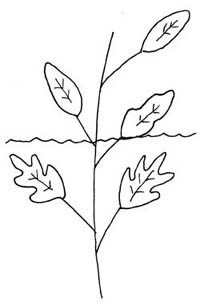 ; submergedsubmerged:
; submergedsubmerged:
(adj) (syn. submersed) under water; submerged below the water surface
leaves usually oppositeopposite:
(adj) (of leaves) two leaves per node; in pairs on opposite sides of an axis
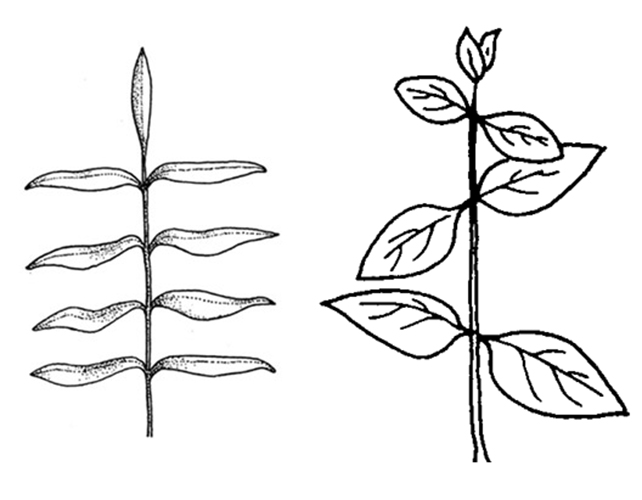 and proximately decussatedecussate:
and proximately decussatedecussate:
(adj) arranged along stem in pairs, with each pair at right angles to the pairs above and below
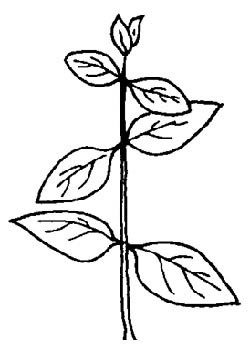 (3 whorledwhorled:
(3 whorledwhorled:
(n) bearing whorls; a type of leaf arrangement (phyllotaxis) in which leaves are in whorls
 leaves in C. furcata), petiolatepetiolate:
leaves in C. furcata), petiolatepetiolate:
(adj) relating to or in the form of a petiole; bearing petioles
; leaf bladeblade:
(n) (syn. lamina) the flat, expanded part of a leaf, frond, or petal (excluding, e.g., the petiole)
 finely dichotomously and trichotomously dissecteddissected:
finely dichotomously and trichotomously dissecteddissected:
(adj) (of leaves) +/- deeply divided, cut, or lobed, including being compound
; floating leaves produced in association with flowers, peltatepeltate:
(adj) of usually flat organs such as leaves: having its stalk attached to its underside away from the margin, near the center
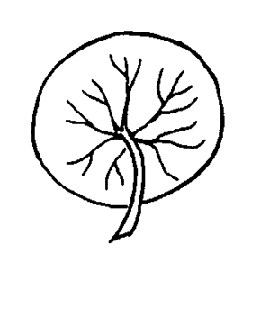 , ellipticelliptical:
, ellipticelliptical:
(adj) in the form of an ellipse (oval)
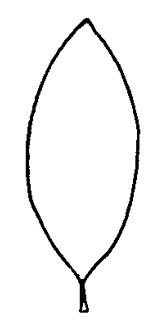 to ovateovate:
to ovateovate:
(adj) egg-shaped in outline; generally with the broad end at or near the base
 . Flowers axillaryaxillary:
. Flowers axillaryaxillary:
(adj) in, of, or produced from an axil
, solitary, produced on long pedicelpedicel:
(n) the stalk of a single flower in an inflorescence, or of a grass spikelet
and opening above water surface, bisexualbisexual:
(adj) having both male and female sexual reproductive structures on one individual or in one flower
; perianthperianth:
(n) collective term for the calyx and corolla of a flower; also used for floral whorl(s) in which the calyx and corolla cannot be resolved; any of the leaves or bracts surrounding the sex organs of bryophytes
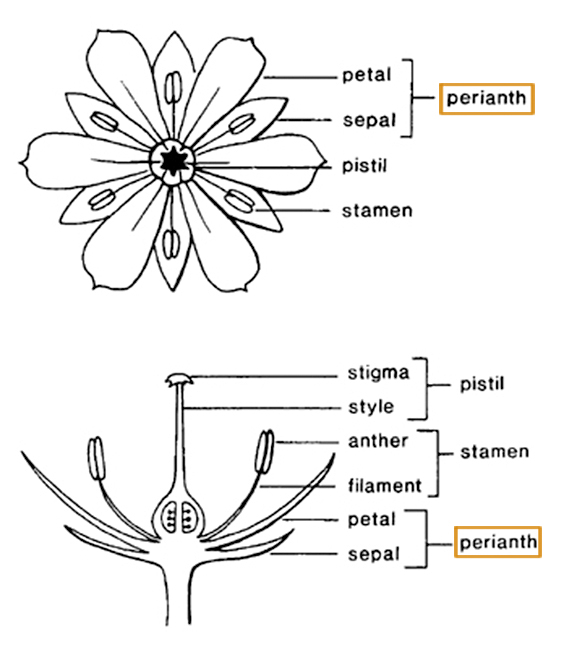 of 6 tepals in 2 whorls of 3 (sometimes only 2 in each in C. aquatica), white to yellow or purplish-pink.
of 6 tepals in 2 whorls of 3 (sometimes only 2 in each in C. aquatica), white to yellow or purplish-pink.
typically found in still waters up to several meters in depth (deep rivers, lakes, and water impoundments)
This genus is closely related to Brasenia. Species of Cabomba are typically rapidly growing plants that quickly out-compete other species. A high degree of allelopathic chemicals (phenolics and alkaloids) in the plant tissues results in relatively few predators. Cultivated submersedsubmersed:
see submerged
in large ponds. The taxonomy of this genus has been confused due to the high degree of leaf color and morphological variation with differing environmental conditions found in some species.